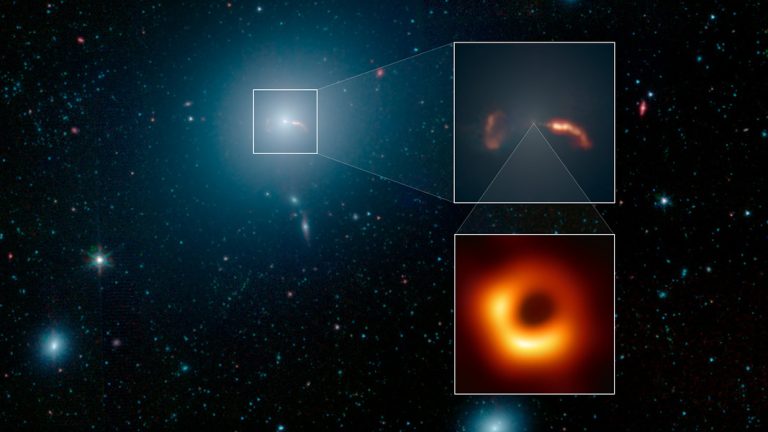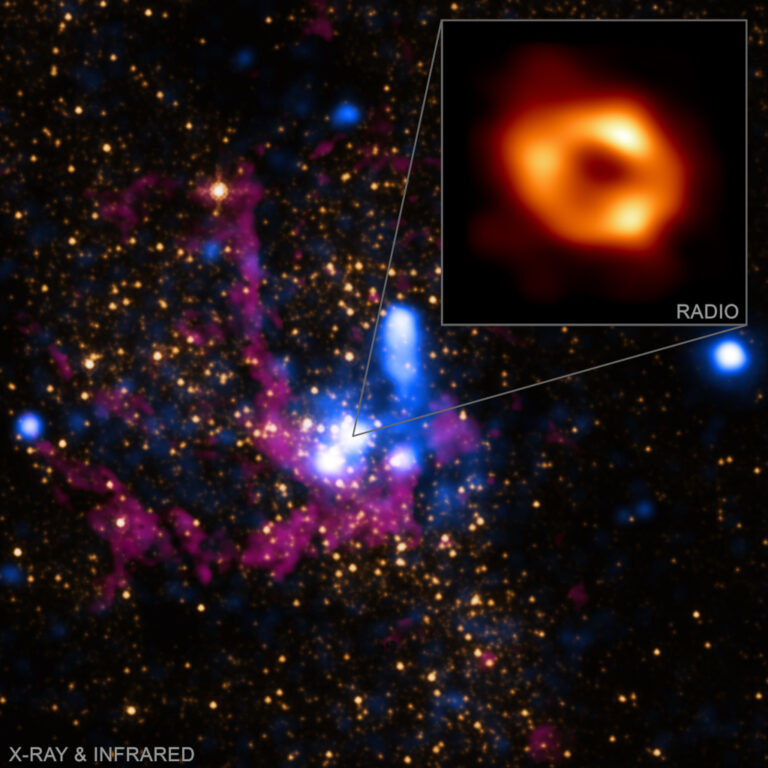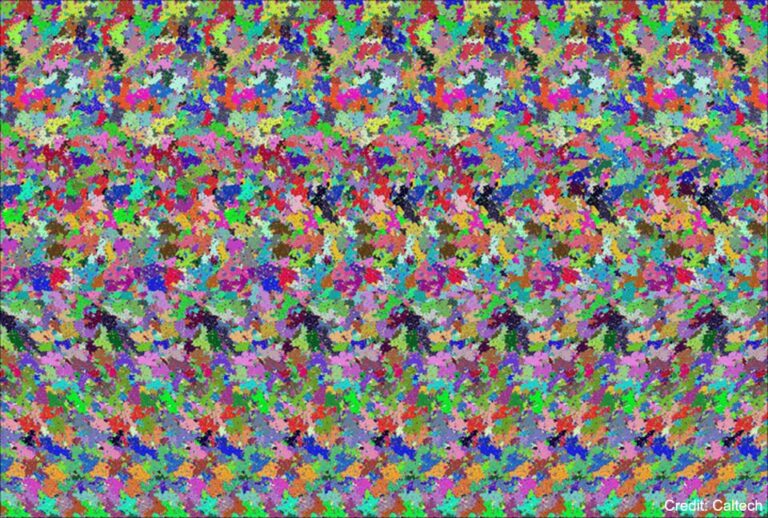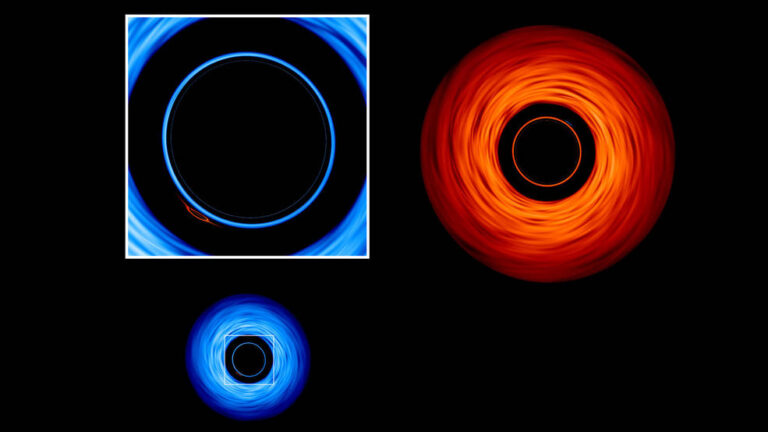星系、喷流与著名的黑洞
请参阅说明。单击图片将下载可用的最高分辨率版本。

请参阅说明。单击图片将下载可用的最高分辨率版本。

2022年5月13日 The Milky Way’s Black Hole Image Credit: X-ray – NASA/CXC/SAO, IR – NASA/HST/STScI; Inset: Radio – Event Horizon Telescope Collaboration Explanation: There’s a black hole at the center of the Milky Way. Stars are observed to orbit a very massive and compact object there known as Sgr A* (say “sadge-ay-star”). But this just released radio image (inset) from planet Earth’s Event Horizon Telescope is the first direct evidence of the Milky Way’s central black hole. As predicted by Einstein’s Theory of General Relativity, the four million solar mass black hole’s strong gravity is bending light and creating a shadow-like dark central region surrounded by a bright ring-like structure. Supporting observations made by space-based telescopes and ground-based observatories provide a wider view of the galactic…

2021年10月3日 The Holographic Principle and a Teapot Image Credit: Caltech Explanation: Sure, you can see the 2D rectangle of colors, but can you see deeper? Counting color patches in the featured image, you might estimate that the most information that this 2D digital image can hold is about 60 (horizontal) x 50(vertical) x 256 (possible colors) = 768,000 bits. However, the yet-unproven Holographic Principle states that, counter-intuitively, the information in a 2D panel can include all of the information in a 3D room that can be enclosed by the panel. The principle derives from the idea that the Planck length, the length scale where quantum mechanics begins to dominate classical gravity, is one side of an area that can hold only about one bit of…

2021年04月16日 The Doubly Warped World of Binary Black Holes Scientific Visualization Credit: NASA, Goddard Space Flight Center, Jeremy Schnittman and Brian P. Powell – Text: Francis Reddy Explanation: Light rays from accretion disks around a pair of orbiting supermassive black holes make their way through the warped space-time produced by extreme gravity in this stunning computer visualization. The simulated accretion disks have been given different false color schemes, red for the disk surrounding a 200-million-solar-mass black hole, and blue for the disk surrounding a 100-million-solar-mass black hole. That makes it easier to track the light sources, but the choice also reflects reality. Hotter gas gives off light closer to the blue end of the spectrum and material orbiting smaller black holes experiences stronger gravitational effects…